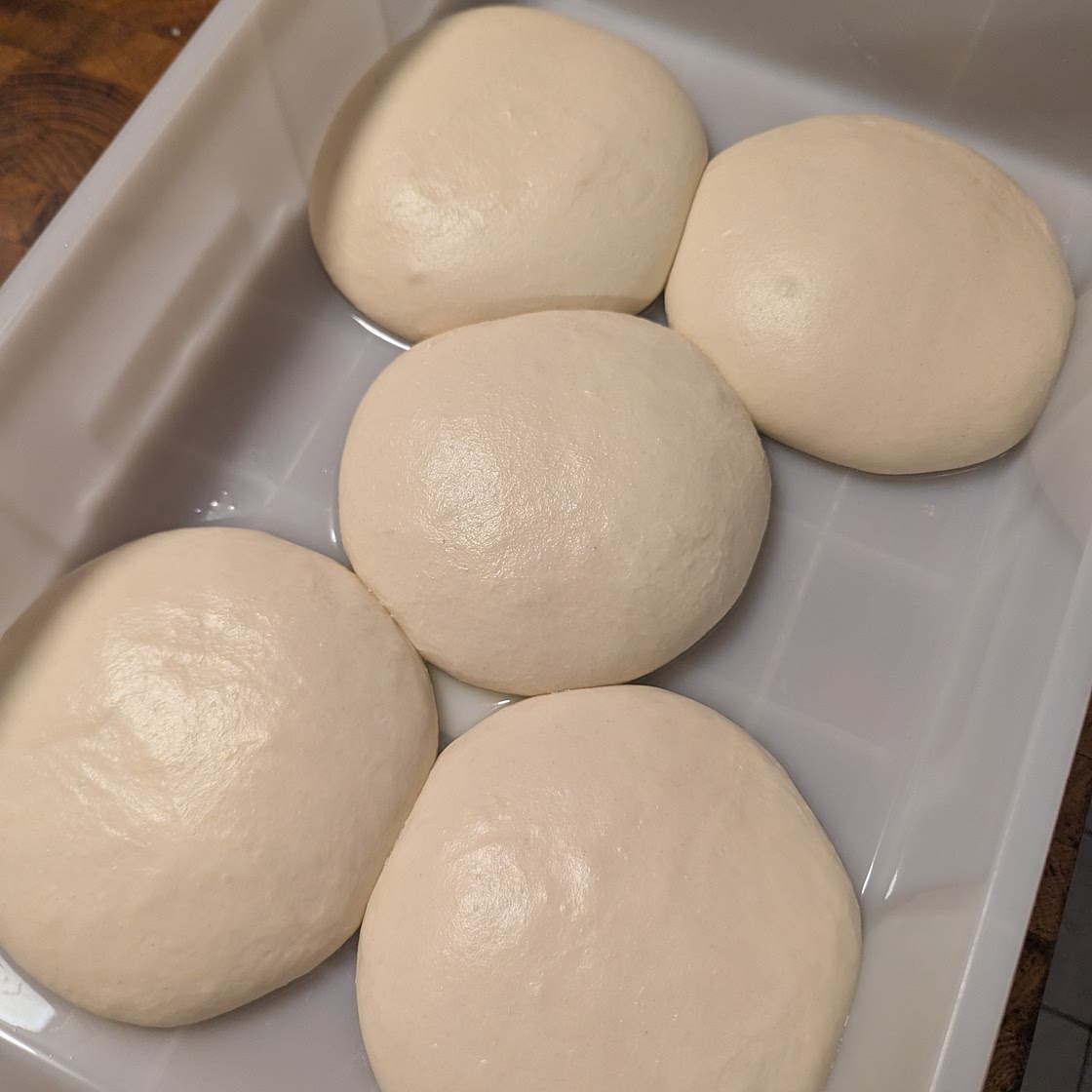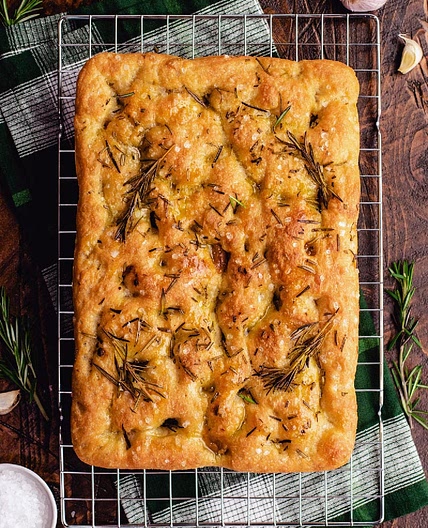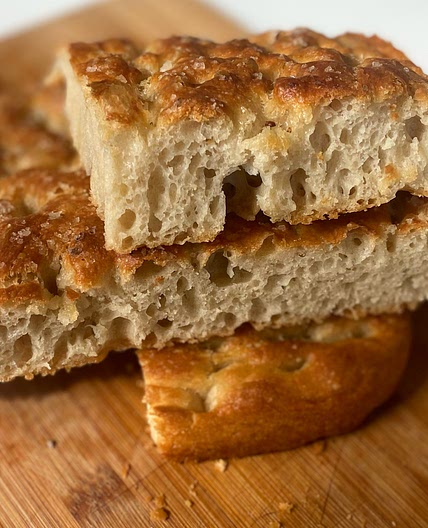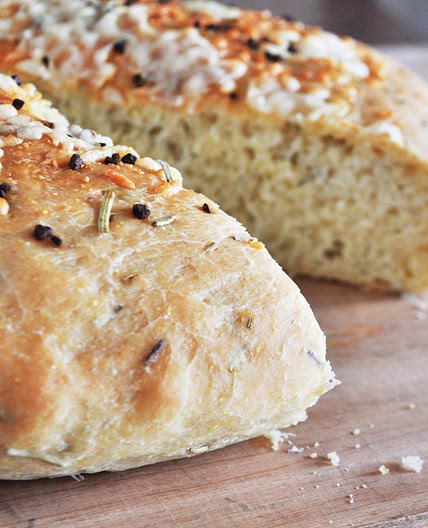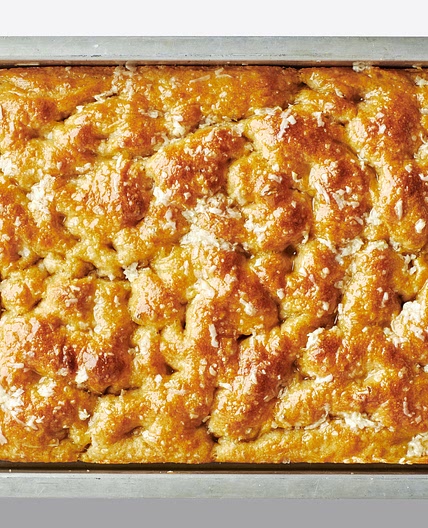Thank you for the additional information and corrections. It's clear that you're working within specific constraints due to Thailand's hot and humid climate and your plans to open a pizza restaurant without extensive refrigeration. Let's revisit your situation and focus on strategies that align with your needs:
Salt Content: You're using 8.5g of salt for 350g of flour, which is about 2.43% of the flour weight. This is within the typical range for pizza dough (2-2.5%), so no adjustments are needed here.
Yeast Quantity: Increasing yeast isn't practical because the dough becomes too soft in your environment, making it difficult to handle.
Fermentation: Long cold fermentation isn't feasible due to space and equipment limitations.
Given these factors, let's explore other avenues to achieve a crunchier pizza crust that fits within your operational needs.
---
1. Adjust Baking Temperature and Time
Recommendation:
Lower the Oven Temperature Slightly: Reduce the temperature to around 370-380°C.
Increase Baking Time: Extend the baking time to 2.5 - 3 minutes.
Benefits:
Moisture Evaporation: A slightly longer bake at a lower temperature allows more moisture to escape from the dough, resulting in a crisper crust.
Even Cooking: Prevents the crust from burning while ensuring it's thoroughly cooked.
---
2. Use a Pizza Stone or Steel
Recommendation:
Preheat a Pizza Stone or Steel: Ensure it's thoroughly heated before baking.
Benefits:
Heat Retention: Provides consistent, intense heat to the pizza base.
Crispier Crust: Promotes rapid moisture evaporation from the bottom, enhancing crispness.
---
3. Incorporate Oil into Your Dough
Recommendation:
Add Olive Oil: Incorporate 1-2 tablespoons (about 15-30ml) of olive oil into your dough during mixing.
Benefits:
Texture Enhancement: Oil helps to create a barrier that slows moisture absorption, leading to a crisper crust.
Flavor Improvement: Adds richness to the dough.
---
4. Modify Flour Blend
Recommendation:
Increase High-Protein Flour: Adjust your flour ratio to include more high-protein bread flour.
For example, use 200g of 00 flour and 150g of bread flour.
Add Semolina Flour: Replace a small portion of your flour (about 50g) with semolina flour.
Benefits:
Stronger Gluten Network: More high-protein flour enhances dough strength and chewiness.
Crispness: Semolina adds a pleasant crunch and golden color to the crust.
---
5. Control Dough Fermentation
Recommendation:
Use Cooler Water: Mix your dough with cold water to slow down yeast activity.
Shorten Fermentation Time: Given the climate, reduce bulk fermentation to 1 hour and proof the dough balls for 2-3 hours.
Temperature Management: If possible, ferment the dough in an air-conditioned room to keep the temperature around 24-26°C.
Benefits:
Dough Handling: Slower fermentation prevents the dough from becoming overly soft.
Consistency: Helps maintain uniform dough quality throughout the day.
---
6. Adjust Yeast Type
Recommendation:
Use Fresh Yeast: If available, fresh yeast might offer better control in hot climates.
Enzyme Inhibitors: Consider using a small amount of salt or sugar directly with the yeast to regulate its activity.
Benefits:
Controlled Fermentation: Helps prevent over-proofing and maintains dough strength.
Texture Improvement: Leads to a better oven spring and crust structure.
---
7. Manage Dough Hydration
Recommendation:
Slightly Reduce Water Content: Decrease hydration to around 60% (use 210g of water for 350g of flour).
Benefits:
Easier Handling: Less sticky and easier to shape, especially in humid conditions.
Crispier Crust: Lower hydration results in a drier, crisper crust after baking.
---
8. Optimize Dough Handling Techniques
Recommendation:
Gentle Shaping: Avoid overworking the dough, which can weaken the gluten network.
Use Bench Flour: Dust your work surface and hands with semolina or rice flour to prevent sticking without adding excess moisture.
Benefits:
Prevent Tearing: Maintains dough strength for better shaping.
Consistent Thickness: Ensures even cooking and crispness.
---
9. Limit Moisture from Toppings
Recommendation:
Use Thicker Sauce: Reduce water content in your tomato sauce.
Drain Toppings: Remove excess moisture from ingredients like mozzarella or vegetables.
Apply Toppings Sparingly: Use a moderate amount to prevent overwhelming the crust.
Benefits:
Crisp Crust: Less moisture prevents the crust from becoming soggy.
Flavor Balance: Highlights the crust's texture and the toppings' flavors.
---
10. Post-Baking Handling
Recommendation:
Cool on a Wire Rack: After baking, place the pizza on a rack instead of a solid surface.
Serve Immediately: Minimize the time between baking and serving.
Benefits:
Prevent Sogginess: Allows steam to escape from the bottom, keeping the crust crisp.
Customer Satisfaction: Ensures the pizza is enjoyed at its optimal texture.
---
11. Environmental Control
Recommendation:
Humidity Reduction: Use dehumidifiers or air conditioning in your kitchen area.
Time of Day: Prepare and bake dough during less humid periods if possible.
Benefits:
Dough Quality: Easier to manage and less prone to stickiness.
Crispness Retention: Lower ambient humidity helps maintain crust texture.
---
12. Experiment with Enzymes or Dough Conditioners
Recommendation:
Additives: Consider using commercial dough conditioners designed for hot climates.
Consult Suppliers: Speak with ingredient suppliers about products that enhance crust crispness.
Benefits:
Consistency: Improves dough performance under challenging conditions.
Texture Enhancement: Can contribute to a crispier crust without altering flavor.
---
Summary
Given your operational constraints and environmental factors, focusing on adjustments to your baking process, dough formulation, and handling techniques will help you achieve a crunchier pizza crust. Here's a concise action plan:
Adjust Baking Parameters: Lower oven temperature slightly and bake a bit longer.
Incorporate Oil: Add olive oil to your dough for crispness.
Modify Flour Blend: Increase high-protein flour and consider adding semolina.
Control Fermentation: Use cooler water and ferment in a cooler environment.
Manage Hydration: Slightly reduce water content for easier handling.
Optimize Handling: Use gentle shaping techniques and proper bench flour.
Limit Moisture: Use thicker sauce and drain toppings.
Post-Bake Care: Cool pizzas on wire racks and serve promptly.
---
Additional Considerations for Restaurant Operations
Consistency: Standardize your recipe and processes to ensure consistent results, which is crucial for customer satisfaction.
Staff Training: Educate your team on the importance of each step in the process, especially in dough handling and baking techniques.
Equipment: Invest in quality baking surfaces like pizza stones or steels, and consider ovens with good heat retention and distribution suitable for your volume of production.
Supplier Relationships: Work closely with your ingredient suppliers to source flours and additives optimized for your specific needs.
---

